Understanding Jean Styles
Jean styles vary significantly‚ catering to different body types and preferences. High-rise jeans elongate the torso‚ while mid-rise offers a balanced fit. Low-rise styles are trendy but may lack comfort for some. Inseam lengths range from short to long‚ impacting the break and overall look. Fabric content‚ such as cotton‚ stretch‚ or raw denim‚ affects flexibility and durability. Understanding these elements helps tailor your choice to your body type and personal style.
1.1 Rise Types: High‚ Mid‚ and Low Rise
High-rise jeans sit above the natural waist‚ offering a retro look and elongating the torso. Mid-rise styles strike a balance‚ resting at the natural waist for comfort and versatility. Low-rise jeans are trendier‚ sitting below the waist‚ but may feel less secure for some. Each rise type caters to different body types and preferences. High-rise flatters longer torsos‚ while mid-rise suits most figures. Low-rise is ideal for those seeking a modern‚ fashion-forward aesthetic. Fabric content‚ like cotton or stretch denim‚ also impacts comfort and fit across all rise types. Choosing the right rise ensures both style and confidence.
1.2 Inseam Length: How to Choose the Right Fit
Inseam length determines how your jeans fit from the crotch to the hem. Short inseams suit petite frames‚ while longer inseams are ideal for taller individuals. The right inseam ensures a flattering break‚ avoiding overly bunchy or overly stretched hems. For a polished look‚ opt for a half or full break‚ where the fabric gently folds at the ankle. Consider your shoe choice‚ as shorter inseams pair well with sneakers‚ while longer ones complement boots or heels. Measuring your inseam accurately ensures the perfect fit‚ balancing style and comfort based on your height and personal aesthetic preferences.

Waistband Fit: Ensuring Comfort and Style
A well-fitting waistband sits snugly without digging into your skin or causing gaps. Proper fit ensures comfort and style‚ preventing the jeans from slipping or feeling restrictive.
2.1 How to Measure Your Waist for the Perfect Fit
Measuring your waist accurately is key to achieving the perfect fit. Use a flexible tape measure and wrap it around your natural waistline‚ typically just above the hipbone. Keep the tape level and snug but not overly tight. Ensure the measure aligns with where your jeans’ waistband will sit. For the most accurate result‚ inhale deeply and exhale naturally before recording the measurement. This ensures the waistband will neither dig into your skin nor feel too loose. Proper waist measurement is essential for both comfort and style‚ ensuring your jeans stay in place throughout the day.
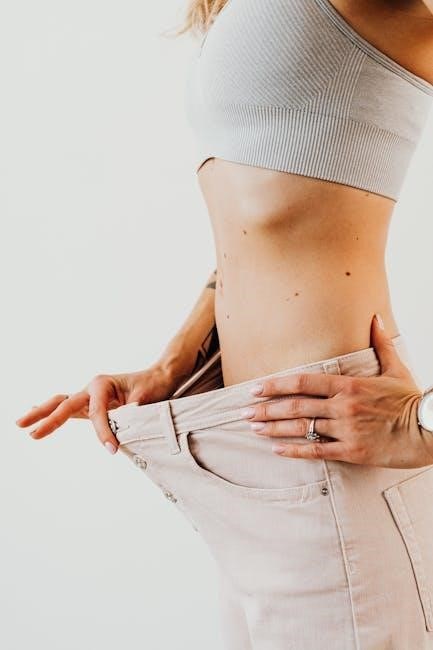
Body Type and Fit
Understanding your body type—hourglass‚ pear‚ or rectangle—helps determine the best jean fit. Hourglass shapes benefit from flared legs‚ while pear types may prefer slim or straight cuts for balance.
3.1 Jeans for Different Body Types: Hourglass‚ Pear‚ and Rectangle
For an hourglass figure‚ flared or bootcut jeans balance the hips and thighs‚ creating a harmonious silhouette. Pear-shaped individuals benefit from straight or slim-fit jeans‚ which draw attention away from the thighs. Rectangle body types can opt for high-waisted or boyfriend jeans to add curves. Each style enhances proportions‚ ensuring a polished look. Understanding your body type helps you choose jeans that flatter your shape and boost confidence. This personalized approach ensures the perfect fit and style for every individual.
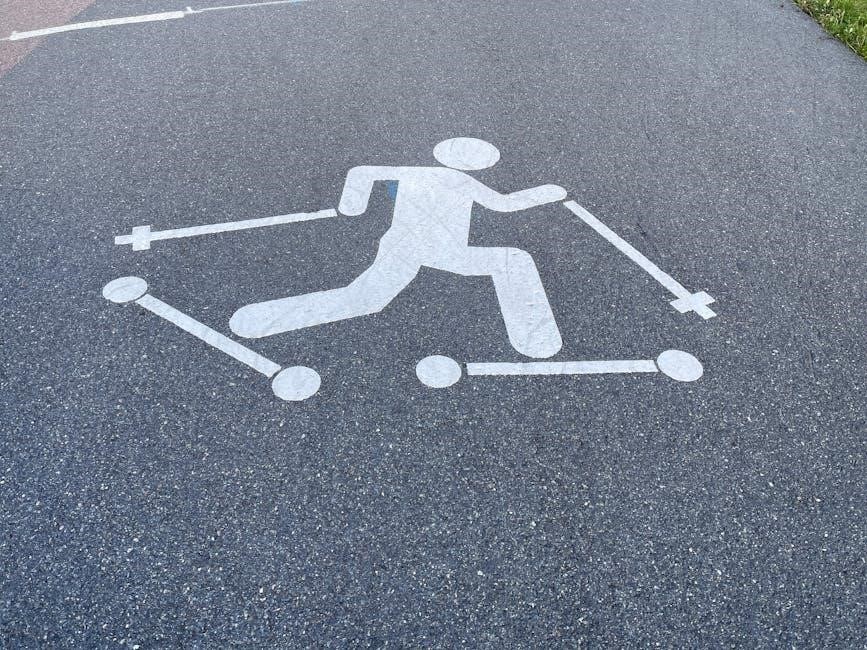
3;2 How to Balance Proportions with Flares or Slim Cuts
Flared jeans are ideal for balancing wider hips‚ as they create a proportional silhouette by adding volume to the lower half. Slim-cut jeans‚ on the other hand‚ elongate the legs and work well for petite frames or those with narrower hips. For hourglass figures‚ flares enhance curves‚ while slim cuts provide a streamlined look. Pear-shaped bodies benefit from flares to distract from the hips‚ whereas rectangle body types can embrace slim cuts for a sleek appearance. Balancing proportions ensures a flattering fit‚ boosting confidence and creating a polished‚ tailored look tailored to your unique shape.
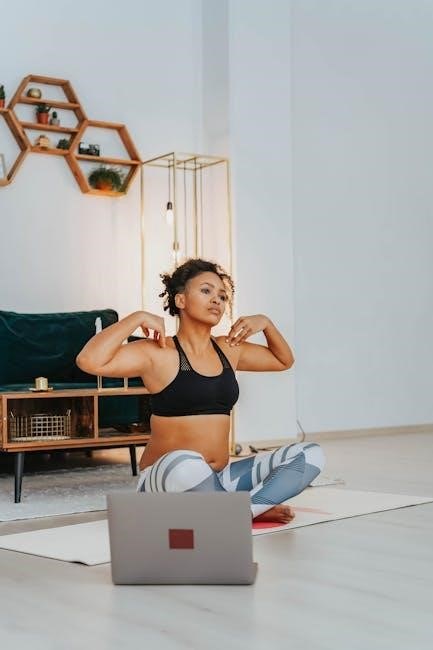
Stretch and Fabric Content
Jeans come in various fabrics‚ such as cotton‚ stretch denim‚ or raw denim. Cotton offers durability‚ while stretch denim adds flexibility. Fabric content impacts comfort‚ fit‚ and longevity.
4.1 Understanding Cotton‚ Stretch‚ and Raw Denim
Cotton denim is durable and breathable‚ ideal for classic styles. Stretch denim‚ blended with elastane‚ offers flexibility and comfort‚ perfect for slim fits. Raw denim‚ untreated and stiff‚ develops a unique fade over time‚ appealing to those who value authenticity. Each fabric type suits different lifestyles and preferences‚ ensuring the right balance of comfort‚ style‚ and longevity.
How to Measure Yourself for Jeans
Measure your waist‚ hips‚ and inseam to determine your size. Use a flexible tape measure for accuracy‚ ensuring a comfortable and precise fit.
5.1 Unique Rise Measurement: Key to Finding Your Fit
Measuring your unique rise is crucial for a perfect fit. High-rise jeans sit above the natural waist‚ while mid-rise offers a balanced look just below. Low-rise styles rest on the hips‚ ideal for a trendy vibe. Use a flexible tape measure to determine your natural waistline and hip placement. Consider your body type and personal style when choosing the rise. For accuracy‚ stand upright and relax your posture. This measurement ensures the waistband sits comfortably without gaping or feeling too tight. Pairing the right rise with your inseam and fabric choice creates a tailored fit. Apps and fit finders can also help refine your unique rise measurement for optimal comfort and style.
Personalized Fit Tools
Apps and fit finders use your measurements to recommend styles‚ ensuring a tailored fit. Goldie‚ an algorithm-based tool‚ analyzes your body type to curate perfect jeans for you.
6.1 Using Apps and Fit Finders for Perfect Jeans
Apps and fit finders revolutionize jean shopping by personalizing your experience. Tools like Goldie analyze your measurements to suggest styles that flatter your body type. Many platforms offer virtual try-ons and detailed fit guides‚ ensuring a perfect match. Old Navy’s denim fit guide compares rises‚ inseams‚ and styles to help you choose. These tools save time and reduce guesswork‚ making online shopping seamless. They also provide recommendations based on trends and your unique proportions‚ ensuring comfort and style. By leveraging technology‚ you can find jeans that fit perfectly without the hassle of in-store trials.
Common Fit Mistakes to Avoid
Common fit mistakes include jeans that are too tight‚ restricting movement‚ or too loose‚ lacking shape. Ensure the waistband fits snugly without gapping for a balanced‚ comfortable look.
7.1 Why Jeans That Are Too Tight or Too Loose Are a Bad Fit
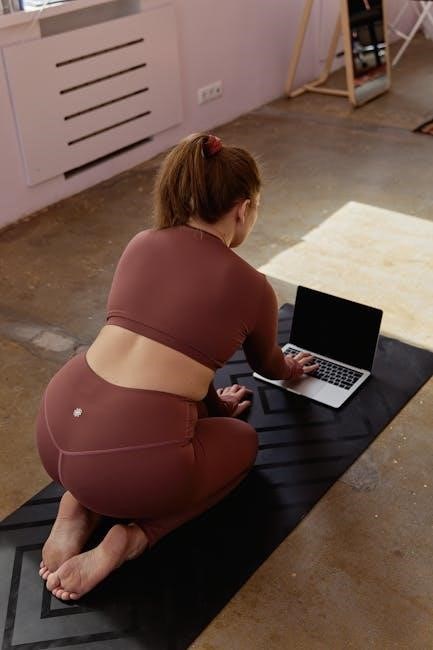
Jean fit is crucial for both comfort and aesthetics. Jeans that are too tight can restrict movement and lead to discomfort throughout the day. They may also cause unsightly bulges or digging into the skin‚ which can be unflattering. On the other hand‚ jeans that are too loose can lack structure‚ appearing sloppy and unpolished; Proper fit ensures the jeans drape well on the body‚ providing a balanced look without compromising comfort. The ideal fit should feel natural‚ allowing freedom of movement while maintaining a stylish appearance.

Styling Tips for Your Jean Fit
Styling your jeans involves pairing them with complementary tops and shoes. For a polished look‚ match high-waisted jeans with cropped tops and heeled ankle boots. Slim-fit jeans pair well with fitted blazers‚ while flared styles can balance broader hips. Consider the occasion and your body type to create a cohesive outfit. Accessories like belts and statement jewelry can enhance the ensemble‚ ensuring a stylish and put-together appearance.
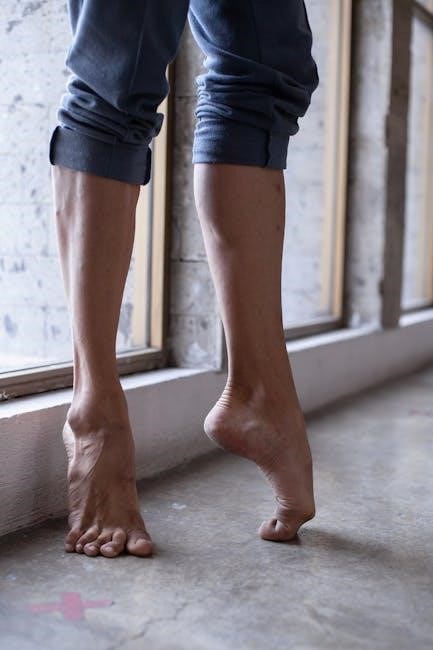
8.1 How to Pair Jeans with Shoes and Tops for a Polished Look
Pairing jeans with shoes and tops creates a polished look when styles are cohesive. For a chic ensemble‚ match high-waisted jeans with heeled ankle boots and a fitted blouse. Slim-fit jeans work well with loafers and a tailored button-down shirt. Flared jeans can be balanced with platform sandals and a cropped top. Consider the jean style and fabric—stretch denim pairs seamlessly with sleek tops‚ while raw denim complements casual tees. Ensure proportions are balanced‚ with longer tops for high-rise jeans and shorter tops for low-rise. Accessories like belts and scarves can elevate the outfit‚ ensuring a stylish and cohesive appearance for any occasion.

Caring for Your Jeans
Wash jeans inside out in cold water to preserve color and fit. Avoid harsh detergents and skip drying machines to prevent shrinkage. Air-dry to maintain quality and shape.
9.1 How to Maintain the Fit and Quality of Your Jeans
To preserve the fit and quality of your jeans‚ wash them inside out in cold water using a gentle detergent. This prevents fading and stress on seams. Avoid using fabric softeners‚ as they can affect stretch and durability. Air-drying is essential; machine drying can shrink or misshape jeans. For raw or stretch denim‚ minimize washing to retain their structure. Store jeans hung or folded neatly to maintain their shape. Regular steaming can help remove wrinkles without damaging the fabric. Proper care extends the life of your jeans‚ ensuring they remain comfortable and stylish for years.
